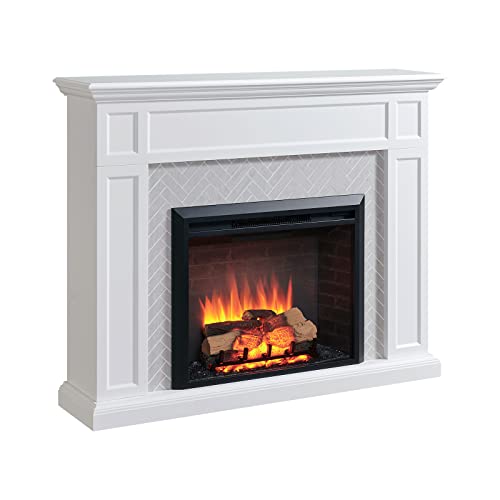Guide To Best Value Fireplaces: The Intermediate Guide To Best Value F…
페이지 정보
작성자 Elvin 작성일25-06-29 05:17 조회17회 댓글0건관련링크
본문
Best Value Fireplaces: An In-Depth Guide
The fireplace has long been related to as the heart of a home, providing heat, ambiance, and a centerpiece for social events. However, navigating through various alternatives can be overwhelming, specifically with budget restraints in mind. This post provides an informative guide on the very best value fireplaces, detailing their types, functions, and advantages to assist house owners make a smart choice.
Types of Fireplaces
Fireplaces are available in a range of designs and types, each with various characteristics, costs, and benefits. Here's a detailed take a look at the most common types of fireplaces readily available in the market today.
| Kind of Fireplace | Description | Average Cost | Pros | Cons |
|---|---|---|---|---|
| Wood-Burning | Burn logs to produce heat and atmosphere. | ₤ 1,500 - ₤ 5,000 | Authentic experience, natural heat | Needs regular maintenance, less efficient |
| Gas Fireplaces | Utilizes natural gas or lp to produce heat. | ₤ 2,000 - ₤ 5,000 | Easy to use, cleaner than wood | Minimal to gas supply, installation expenses |
| Electric Fireplaces | Replicates flames with LED technology and produces heat via electrical energy. | ₤ 200 - ₤ 3,000 | Easy setup, installation flexibility | Less genuine feel, greater operating expenses |
| Pellet Stoves | Usage compressed wood or biomass pellets, supplying an environment-friendly choice. | ₤ 3,000 - ₤ 4,500 | Efficient, low emissions | Requirements electricity to run, needs storage for pellets |
| Ethanol Fireplaces | Burns ethanol fuel, producing flames that don't need a chimney. | ₤ 300 - ₤ 2,500 | No vents required, portable | Higher fuel cost, safety issues |
Aspects to Consider When Choosing a Fireplace
Choosing the right fireplace is not just about aesthetics; it also involves useful considerations. Here are vital factors to keep in mind:
1. Budget
- Determine just how much you want to invest. Keep in mind that installation and maintenance costs can add up.
2. Area and Size
- Make sure the fireplace fits well within the room, considering both the space offered and the heating requirements.
3. Fuel Type
- Select the fuel source based on schedule, expense, and the kind of ambiance you wish to attain.
4. Efficiency
- Select systems with high-efficiency ratings to ensure you are getting the most value for your money in regards to heat output.
5. Aesthetic Appeal
- Choose a design and design that complements existing design and improves the overall appeal of the area.
6. Laws
- Be mindful of regional guidelines, permits, and structure codes that may impact your fireplace setup.
Top Best Value Fireplaces
Based upon consumer reviews, expert opinions, and overall value for cash, here are a few of the best value fireplaces currently available in the market:
1. DuraVent Pellet Stove
- Type: Pellet
- Average Cost: ₤ 2,000
- Highlights: Highly efficient with low emissions, making it an excellent alternative for environmentally-conscious homeowners.
2. Napoleon B36NTR-1
- Type: Gas
- Average Cost: ₤ 2,500
- Emphasizes: This fireplace is aesthetically enticing and extremely efficient, with a sleek style and adjustable flame.
3. Duraflame Electric Heater Stove
- Type: Electric
- Typical Cost: ₤ 200
- Highlights: Affordable and portable, best for smaller sized spaces or adding ambiance to a room without long-term setup.
4. Real Flame Juliet Gel Fireplace
- Type: Ethanol
- Average Cost: ₤ 300
- Highlights: A trendy option for modern areas that needs no venting, making it flexible and simple to install.
5. Vogelzang VG5790
- Type: Wood-Burning
- Average Cost: ₤ 800
- Emphasizes: Offers a traditional wood-burning experience with a sleek modern style, best for those who treasure the traditional atmosphere.
Frequently Asked Questions (FAQs)
Q1: What is the most cost-effective fireplace alternative?
A1: Electric fireplaces tend to be the most affordable in terms of preliminary purchase price and installation, but can have higher operating expense compared to gas or pellet systems.
Q2: Are gas fireplaces safer than wood-burning fireplaces?
A2: Yes, gas fireplaces usually produce less emissions and position a lower risk of chimney fires as they don't produce creosote like wood-burning systems.

Q3: Can I set up a fireplace myself?
A3: While some electric fireplaces permit easy self-installation, other types, specifically gas and wood-burning models, usually need professional setup due to venting and safety concerns.
Q4: How do I keep my fireplace?
A4: Regular upkeep consists of cleaning up the chimney (for wood-burning fireplaces), examining for gas leakages (in gas systems), and making sure proper ventilation for electric models.

Q5: Is an ethanol fireplace a great option?
A5: Ethanol fireplaces are appealing for their modern design and ease of setup. Nevertheless, they can be less efficient and more expensive to run long-lasting compared to other fuel types.
Choosing a value fireplace that fulfills your aesthetic preferences and useful requirements includes extensive research study and factor to consider. By comprehending different kinds of fireplaces, their associated costs, and benefits, homeowners can make educated decisions that will not only fit their budget plan but also boost the warm and inviting environment of their homes. Whether choosing for an electric, gas, wood-burning, pellet, or ethanol design, the perfect fireplace awaits to change your home.
댓글목록
등록된 댓글이 없습니다.

